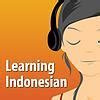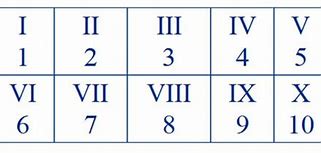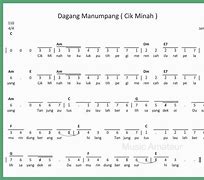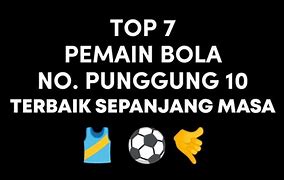
LEARN HOW TO SPEAK INDONESIAN.
Old Malay as lingua franca
Trade contacts carried on by various ethnic peoples at the time were the main vehicle for spreading the Old Malay language, which was the main communications medium among the traders. Ultimately, the Old Malay language became a lingua franca and was spoken widely by most people in the archipelago.[28][29]
Indonesian (in its standard form) has essentially the same material basis as the Malaysian standard of Malay and is therefore considered to be a variety of the pluricentric Malay language. However, it does differ from Malaysian Malay in several respects, with differences in pronunciation and vocabulary. These differences are due mainly to the Dutch and Javanese influences on Indonesian. Indonesian was also influenced by the Melayu pasar (lit. 'market Malay'), which was the lingua franca of the archipelago in colonial times, and thus indirectly by other spoken languages of the islands.
Malaysian Malay claims to be closer to the classical Malay of earlier centuries, even though modern Malaysian has been heavily influenced, in lexicon as well as in syntax, by English. The question of whether High Malay (Court Malay) or Low Malay (Bazaar Malay) was the true parent of the Indonesian language is still in debate. High Malay was the official language used in the court of the Johor Sultanate and continued by the Dutch-administered territory of Riau-Lingga, while Low Malay was commonly used in marketplaces and ports of the archipelago. Some linguists have argued that it was the more common Low Malay that formed the base of the Indonesian language.[30]
Loan words of Portuguese origin
Alongside Malay, Portuguese was the lingua franca for trade throughout the archipelago from the sixteenth century through to the early nineteenth century. The Portuguese were among the first westerners to sail eastwards to the "Spice Islands". Loanwords from Portuguese were mainly connected with articles that the early European traders and explorers brought to Southeast Asia. Indonesian words derived from Portuguese include meja (from mesa = table), bangku (from banco = bench), lemari/almari (from armário = closet), boneka (from boneca = doll), jendela (from janela = window), gereja (from igreja = church), misa (from missa = mass), Natal (from Natal = Christmas), Paskah (from Páscoa = Easter), pesta (from festa = party), dansa (from dança = dance), pesiar (from passear = cruise), bendera (from bandeira = flag), sepatu (from sapato = shoes), garpu (from garfo = fork), kemeja (from camisa = shirt), kereta (from carreta = chariot), pompa (from bomba hidráulica = pump), pigura (from figura = picture), roda (from roda = wheel), nona (from dona = young woman), sekolah (from escola = school), lentera (from lanterna = lantern), paderi (from padre = priest), Santo, Santa (from Santo, Santa = Saint), puisi (from poesia = poetry), keju (from queijo = cheese), mentega (from manteiga = butter), serdadu (from soldado = soldier), meski (from mas que = although), kamar (from câmara = room), laguna (from laguna = lagoon), lelang (from leilão = auction), persero (from parceiro = company), markisa (from maracujá = passion fruit), limau (from limão = lemon), kartu (from cartão = card), Inggris (from inglês = English), Sabtu (from sábado = Saturday), Minggu (from domingo = Sunday), etc.[108]
Loan words of Arabic origin
Many Arabic words were brought and spread by merchants from Arab Peninsula like Arabian, Persian, and from the western part of India, Gujarat where many Muslims lived.[106] As a result, many Indonesian words come from the Arabic language. Especially since the late 12th century, Old Malay was heavily influenced by the language and produced many great literary works such as Syair, Babad, Hikayat, and Suluk. This century is known as The Golden Age of Indonesian Literature.[106]
Many loanwords from Arabic are mainly concerned with religion, in particular with Islam, and by extension, with greetings such as the word, "selamat" (from Arabic: سلامة salāma = health, soundness)[107] means "safe" or "lucky". Words of Arabic origin include dunia (from Arabic: دنيا dunyā = the present world), names of days (except Minggu), such as Sabtu (from Arabic: سبت sabt-u = Saturday), iklan (آعلان iʻlan = advertisement), kabar (خبر khabar = news), Kursi (كرسي kursī = a chair), ijazah (إجازة ijāza = 'permission', certificate of authority, e.g. a school diploma certificate), kitab (كتاب kitāb = book), tertib (ترتيب tartīb = order/arrangement) and kamus (قاموس qāmūs = dictionary). Allah (Arabic: الله), as is mostly the case for Arabic speakers, this is the word for God even in Christian Bible translations. Many early Bible translators, when they came across some unusual Hebrew words or proper names, used the Arabic cognates. In the newer translations this practice is discontinued. They now turn to Greek names or use the original Hebrew Word. For example, the name Jesus was initially translated as 'Isa (Arabic: عيسى), but is now spelt as Yesus. Several ecclesiastical terms derived from Arabic still exist in Indonesian language. Indonesian word for bishop is uskup (from Arabic: أسقف usquf = bishop). This in turn makes the Indonesian term for archbishop uskup agung (lit. 'great bishop'), which is combining the Arabic word with an Old Javanese word. The term imam (from Arabic: إمام imām = leader, prayer leader) is used to translate a Catholic priest, beside its more common association with an Islamic prayer leader. Some Protestant denominations refer to their congregation jemaat (from Arabic: جماعة jamāʻa = group, a community). Even the name of the Bible in Indonesian translation is Alkitab (from Arabic: الكتاب al-kitāb = the book), which literally means "the Book".
Geographical distribution
In 2020, Indonesian had 71.9 million native speakers and 176.5 million second-language speakers,[58] who speak it alongside their local mother tongue, giving a total number of speakers in Indonesia of 248.5 million.[59] It is common as a first language in urban areas, and as a second language by those residing in more rural parts of Indonesia.
The VOA and BBC use Indonesian as their standard for broadcasting in Malay.[60][61] In Australia, Indonesian is one of three Asian target languages, together with Japanese and Mandarin, taught in some schools as part of the Languages Other Than English programme.[62] Indonesian has been taught in Australian schools and universities since the 1950s.[63]
In East Timor, which was occupied by Indonesia between 1975 and 1999, Indonesian is recognized by the constitution as one of the two working languages (the other being English), alongside the official languages of Tetum and Portuguese.[8] It is understood by the Malay people of Australia's Cocos Keeling Islands in the Indian Ocean, also in some parts of the Sulu area of the southern Philippines and traces of it are to be found among people of Malay descent in Sri Lanka, South Africa, and other places.[16]
Geographical distribution
Karbi is spoken in the following areas of Northeast India (Ethnologue).
An estimate 1500 Karbi live in Bangladesh.[5]
From Wikipedia, the free encyclopedia
Oceanic language in Papua New Guinea
Bola, or Bakovi, is an Oceanic language of West New Britain in Papua New Guinea. The Harua (Xarua) dialect developed on a palm plantation.
Phonology of the Bola language:[2]
/t/ is realized as /s, ʃ/ only when occurring in front of /i/. The voiced stops /b d ɡ/ can often sound prenasalized [ᵐb ⁿd ᵑɡ] among various speakers. /ɣ/ can be pronounced as a glottal fricative [h] among younger speakers.
/i/ before vowel sounds /ɑ ɛ ɔ u/ is pronounced as a glide sound [j].[3]
Colonial era and the birth of Indonesian
When the Dutch East India Company (VOC) first arrived in the archipelago at the start of the 1600s, the Malay language was a significant trading and political language due to the influence of the Malaccan Sultanate and later the Portuguese. However, the language had never been dominant among the population of the Indonesian archipelago as it was limited to mercantile activity. The VOC adopted the Malay language as the administrative language of their trading outpost in the east. Following the bankruptcy of the VOC, the Batavian Republic took control of the colony in 1799, and it was only then that education in and promotion of Dutch began in the colony. Even then, Dutch administrators were remarkably reluctant to promote the use of Dutch compared to other colonial regimes. Dutch thus remained the language of a small elite: in 1940, only 2% of the total population could speak Dutch. Nevertheless, it did have a significant influence on the development of Malay in the colony: during the colonial era, the language that would be standardized as Indonesian absorbed a large amount of Dutch vocabulary in the form of loanwords.
The nationalist movement that ultimately brought Indonesian to its national language status rejected Dutch from the outset. However, the rapid disappearance of Dutch was a very unusual case compared with other colonized countries, where the colonial language generally has continued to function as the language of politics, bureaucracy, education, technology, and other fields of importance for a significant time after independence.[31] The Indonesian scholar Soenjono Dardjowidjojo [id] even goes so far as to say that when compared to the situation in other Asian countries such as India, Malaysia, Singapore and the Philippines, "Indonesian is perhaps the only language that has achieved the status of a national language in its true sense" since it truly dominates in all spheres of Indonesian society.[32] The ease with which Indonesia eliminated the language of its former colonial power can perhaps be explained as much by Dutch policy as by Indonesian nationalism. In marked contrast to the French, Spanish and Portuguese, who pursued an assimilation colonial policy, or even the British, the Dutch did not attempt to spread their language among the indigenous population. In fact, they consciously prevented the language from being spread by refusing to provide education, especially in Dutch, to the native Indonesians so they would not come to see themselves as equals.[31] Moreover, the Dutch wished to prevent the Indonesians from elevating their perceived social status by taking on elements of Dutch culture. Thus, until the 1930s, they maintained a minimalist regime and allowed Malay to spread quickly throughout the archipelago.
Dutch dominance at that time covered nearly all aspects, with official forums requiring the use of Dutch, although since the Second Youth Congress (1928) the use of Indonesian as the national language was agreed on as one of the tools in the independence struggle. As of it, Mohammad Hoesni Thamrin inveighed actions underestimating Indonesian. After some criticism and protests, the use of Indonesian was allowed since the Volksraad sessions held in July 1938.[33] By the time they tried to counter the spread of Malay by teaching Dutch to the natives, it was too late, and in 1942, the Japanese conquered Indonesia. The Japanese mandated that all official business be conducted in Indonesian and quickly outlawed the use of the Dutch language.[34] Three years later, the Indonesians themselves formally abolished the language and established bahasa Indonesia as the national language of the new nation.[35] The term bahasa Indonesia itself had been proposed by Mohammad Tabrani in 1926,[36] and Tabrani had further proposed the term over calling the language Malay language during the First Youth Congress in 1926.[4]
Indonesian language (old VOS spelling):Jang dinamakan 'Bahasa Indonesia' jaitoe bahasa Melajoe jang soenggoehpoen pokoknja berasal dari 'Melajoe Riaoe' akan tetapi jang soedah ditambah, dioebah ataoe dikoerangi menoeroet keperloean zaman dan alam baharoe, hingga bahasa itoe laloe moedah dipakai oleh rakjat diseloeroeh Indonesia; pembaharoean bahasa Melajoe hingga menjadi bahasa Indonesia itoe haroes dilakoekan oleh kaoem ahli jang beralam baharoe, ialah alam kebangsaan Indonesia Indonesian (modern EYD spelling): Yang dinamakan 'Bahasa Indonesia' yaitu bahasa Melayu yang sungguhpun pokoknya berasal dari 'Melayu Riau' akan tetapi yang sudah ditambah, diubah atau dikurangi menurut keperluan zaman dan alam baru, hingga bahasa itu lalu mudah dipakai oleh rakyat di seluruh Indonesia; pembaharuan bahasa Melayu hingga menjadi bahasa Indonesia itu harus dilakukan oleh kaum ahli yang beralam baru, ialah alam kebangsaan Indonesia English: "What is named as 'Indonesian language' is a true Malay language derived from 'Riau Malay' but which had been added, modified or subscribed according to the requirements of the new age and nature, until it was then used easily by people across Indonesia; the renewal of Malay language until it became Indonesian it had to be done by the experts of the new nature, the national nature of Indonesia" — Ki Hajar Dewantara in the Congress of Indonesian Language I 1938, Solo[37][38]
Several years prior to the congress, Swiss linguist, Renward Brandstetter wrote An Introduction to Indonesian Linguistics in 4 essays from 1910 to 1915. The essays were translated into English in 1916. By "Indonesia", he meant the name of the geographical region, and by "Indonesian languages" he meant Malayo-Polynesian languages west of New Guinea, because by that time there was still no notion of Indonesian language.
Sutan Takdir Alisjahbana was a great promoter of the use and development of Indonesian and he was greatly exaggerating the decline of Dutch. Higher education was still in Dutch and many educated Indonesians were writing and speaking in Dutch in many situations (and were still doing so well after independence was achieved). He believed passionately in the need to develop Indonesian so that it could take its place as a fully adequate national language, able to replace Dutch as a means of entry into modern international culture. In 1933, he began the magazine Pujangga Baru (New Writer — Poedjangga Baroe in the original spelling) with co-editors Amir Hamzah and Armijn Pane. The language of Pujangga Baru came in for criticism from those associated with the more classical School Malay and it was accused of publishing Dutch written with an Indonesian vocabulary. Alisjahbana would no doubt have taken the criticism as a demonstration of his success. To him the language of Pujangga Baru pointed the way to the future, to an elaborated, Westernised language able to express all the concepts of the modern world. As an example, among the many innovations they condemned was use of the word bisa instead of dapat for 'can'. In Malay bisa meant only 'poison from an animal's bite' and the increasing use of Javanese bisa in the new meaning they regarded as one of the many threats to the language's purity. Unlike more traditional intellectuals, he did not look to Classical Malay and the past. For him, Indonesian was a new concept; a new beginning was needed and he looked to Western civilisation, with its dynamic society of individuals freed from traditional fetters, as his inspiration.[13]
The prohibition on use of Dutch led to an expansion of Indonesian language newspapers and pressure on them to increase the language's wordstock. The Japanese agreed to the establishment of the Komisi Bahasa (Language Commission) in October 1942, formally headed by three Japanese but with a number of prominent Indonesian intellectuals playing the major part in its activities. Soewandi, later to be Minister of Education and Culture, was appointed secretary, Alisjahbana was appointed an 'expert secretary' and other members included the future president and vice-president, Sukarno and Hatta. Journalists, beginning a practice that has continued to the present, did not wait for the Komisi Bahasa to provide new words, but actively participated themselves in coining terms. Many of the Komisi Bahasa's terms never found public acceptance and after the Japanese period were replaced by the original Dutch forms, including jantera (Sanskrit for 'wheel'), which temporarily replaced mesin (machine), ketua negara (literally 'chairman of state'), which had replaced presiden (president) and kilang (meaning 'mill'), which had replaced pabrik (factory). In a few cases, however, coinings permanently replaced earlier Dutch terms, including pajak (earlier meaning 'monopoly') instead of belasting (tax) and senam (meaning 'exercise') instead of gimnastik (gymnastics). The Komisi Bahasa is said to have coined more than 7000 terms, although few of these gained common acceptance.[13]
Loan words of English origin
Many English words were incorporated into Indonesian through globalization. Many Indonesians, however, mistake words already adopted from Dutch as words borrowed from English. Indonesian adopts English words with standardization.[110] For example: aksesori from accessory.[111][112] However, there are several words that directly borrowed without standardization that have same meanings in English such as: bus, data, domain, detail, internet, film, golf, lift, monitor, radio, radar, unit, safari, sonar, video, and riil as real.[112]
Modern Indonesian draws many of its words from foreign sources, there are many synonyms. For example, Indonesian has three words for "book", i.e. pustaka (from Sanskrit), kitab (from Arabic) and buku (from Dutch boek); however, each has a slightly different meaning. A pustaka is often connected with ancient wisdom or sometimes with esoteric knowledge. A derived form, perpustakaan means a library. A kitab is usually a religious scripture or a book containing moral guidance. The Indonesian words for the Bible and Gospel are Alkitab and Injil, both directly derived from Arabic. The book containing the penal code is also called the kitab. Buku is the most common word for books.
There are direct borrowings from various other languages of the world, such as karaoke (from カラオケ) from Japanese, and ebi (from えび) which means dried shrimp. Many words that originally are adopted through the Dutch language today however often are mistaken as English due to the similarity in the Germanic nature of both languages. In some cases the words are replaced by English language through globalization: although the word arbei (Dutch: aardbei) still literally means strawberry in Indonesian, today the usage of the word stroberi is more common. Greek words such as demokrasi (from δημοκρατία dēmokratía), filosofi, filsafat (both from φιλοσοφία philosophia), mitos (from μῦθος mythos) came through Dutch, Arabic and Portuguese respectively.
It is notable that some of the loanwords that exist in both Indonesian and Malaysian languages are different in spelling and pronunciation mainly due to how they derived their origins: Malaysian utilises words that reflect the English usage (as used by its former colonial power, the British), while Indonesian uses a Latinate form (e.g. aktiviti (Malaysian) vs. aktivitas (Indonesian), universiti (Malaysian) vs. universitas (Indonesian)).
Loan words of Dutch origin
The former colonial power, the Netherlands, left a sizeable amount of vocabulary that can be seen in words such as polisi (from politie = police), kualitas (from kwaliteit = quality), aktual (from actueel = current), rokok (from roken = smoking cigarettes), korupsi (from corruptie = corruption), kantor (from kantoor = office), resleting (from ritssluiting = zipper), pelopor (from voorloper = frontrunner), persneling (from versnelling = transmission gear), setrum (from stroom = electricity current), maskapai (from maatschappij = company), apotek (from apotheek = pharmacy), handuk (from handdoek = towel), setrika (from strijkijzer = clothes iron), bioskop (from bioscoop = movie theater), spanduk (from spandoeken = banner), korsleting (from kortsluiting = short circuit), om (from oom = uncle), tante (from tante = aunt), traktir (from trakteer = treat) and gratis (from gratis = free). These Dutch loanwords, and many other non-Italo-Iberian, European language loanwords that came via Dutch, cover all aspects of life. Some Dutch loanwords, having clusters of several consonants, pose difficulties to speakers of Indonesian. This problem is usually solved by insertion of the schwa. For example, Dutch schroef [ˈsxruf] > sekrup [səˈkrup] (screw (n.)). One scholar argues that 20% of Indonesian words are inspired by the Dutch language.[109]
Before the standardization of the language, many Indonesian words follow standard Dutch alphabet and pronunciation such as "oe" for vowel "u" or "dj" for consonant "j" [dʒ]. As a result, Malay words are written with that orthography such as: passer for the word Pasar or djalan for the word jalan, older Indonesian generation tend to have their name written in such order as well.
tukang_ledeng dalam Bahasa Jepang
Movie Day “Avatar 2” bagi Mahasiswa UNJ Memotivasi mahasiswa UNJ agar percaya diri dalam bekomunikasi dengan bahasa Inggris, UPT Bahasa
Japanese-Language Proficiency Test (JLPT) dikembangkan di Jepang dan telah menjadi standar sertifikasi kompetensi bahasa Jepang di seluruh dunia sejak tahun 1984. Sertifikasi umumnya dibutuhkan untuk study maupun bekerja di negara Jepang maupun lembaga dan perusahaan Jepang pada umumnya.
Sebanyak 7,000 peserta dari seluruh dunia mengikuti test pertama JLPT yang dilaksanakan serentak di 15 negara di berbagai benua, dan pada tahun 2019 telah diikuti oleh lebih dari 1,268,511 peserta di 87 negara diseluruh dunia.
Kini JLPT merupakan ujian sertifikasi kompetensi bahasa Jepang terbesar di dunia.
Official language of Indonesia
This article is about the official language of Indonesia. For an overview on all languages used in Indonesia, see
Recognised minoritylanguage in
Countries of the world where Indonesian is an official, national language
Countries where Indonesian is a minority language or working language
Indonesian (Bahasa Indonesia; [baˈhasa indoˈnesija]) is the official and national language of Indonesia.[9] It is a standardized variety of Malay,[10] an Austronesian language that has been used as a lingua franca in the multilingual Indonesian archipelago for centuries. With over 280 million inhabitants,[11] Indonesia ranks as the fourth most populous nation globally. According to the 2020 census, over 97% of Indonesians are fluent in Indonesian,[12] making it the largest language by number of speakers in Southeast Asia and one of the most widely spoken languages in the world.[13] Indonesian vocabulary has been influenced by various regional languages such as Javanese, Sundanese, Minangkabau, Balinese, Banjarese, and Buginese, as well as by foreign languages such as Arabic, Dutch, Portuguese, and English. Many borrowed words have been adapted to fit the phonetic and grammatical rules of Indonesian, enriching the language and reflecting Indonesia's diverse linguistic heritage.
Most Indonesians, aside from speaking the national language, are fluent in at least one of the more than 700 indigenous local languages; examples include Javanese and Sundanese, which are commonly used at home and within the local community.[14][15] However, most formal education and nearly all national mass media, governance, administration, and judiciary and other forms of communication are conducted in Indonesian.[16]
Under Indonesian rule from 1976 to 1999, Indonesian was designated as the official language of Timor Leste. It has the status of a working language under the country's constitution along with English.[8][17]: 3 [18] In November 2023, the Indonesian language was recognized as one of the official languages of the UNESCO General Conference.
The term Indonesian is primarily associated with the national standard dialect (bahasa baku).[19] However, in a looser sense, it also encompasses the various local varieties spoken throughout the Indonesian archipelago.[10][20] Standard Indonesian is confined mostly to formal situations, existing in a diglossic relationship with vernacular Malay varieties, which are commonly used for daily communication, coexisting with the aforementioned regional languages and with Malay creoles;[19][14] standard Indonesian is spoken in informal speech as a lingua franca between vernacular Malay dialects, Malay creoles, and regional languages.
The Indonesian name for the language (bahasa Indonesia) is also occasionally used in English and other languages. Bahasa Indonesia is sometimes improperly reduced to Bahasa, which refers to the Indonesian subject (Bahasa Indonesia) taught in schools, on the assumption that this is the name of the language. But the word bahasa only means language. For example, French language is translated as bahasa Prancis, and the same applies to other languages, such as bahasa Inggris (English), bahasa Jepang (Japanese), bahasa Arab (Arabic), bahasa Italia (Italian), and so on. Indonesians generally may not recognize the name Bahasa alone when it refers to their national language.[21]
Standard Indonesian is a standard language of "Riau Malay",[5][6] which despite its common name is not based on the vernacular Malay dialects of the Riau Islands, but rather represents a form of Classical Malay as used in the 19th and early 20th centuries in the Riau-Lingga Sultanate. Classical Malay had emerged as a literary language in the royal courts along both shores of the Strait of Malacca, including the Johor Sultanate and Malacca Sultanate.[22][23][24] Originally spoken in Northeast Sumatra,[25] Malay has been used as a lingua franca in the Indonesian archipelago for half a millennium. It might be attributed to its ancestor, the Old Malay language (which can be traced back to the 7th century). The Kedukan Bukit Inscription is the oldest surviving specimen of Old Malay, the language used by Srivijayan empire.[26] Since the 7th century, the Old Malay language has been used in Nusantara (archipelago) (Indonesian archipelago), evidenced by Srivijaya inscriptions and by other inscriptions from coastal areas of the archipelago, such as Sojomerto inscription.[26]























